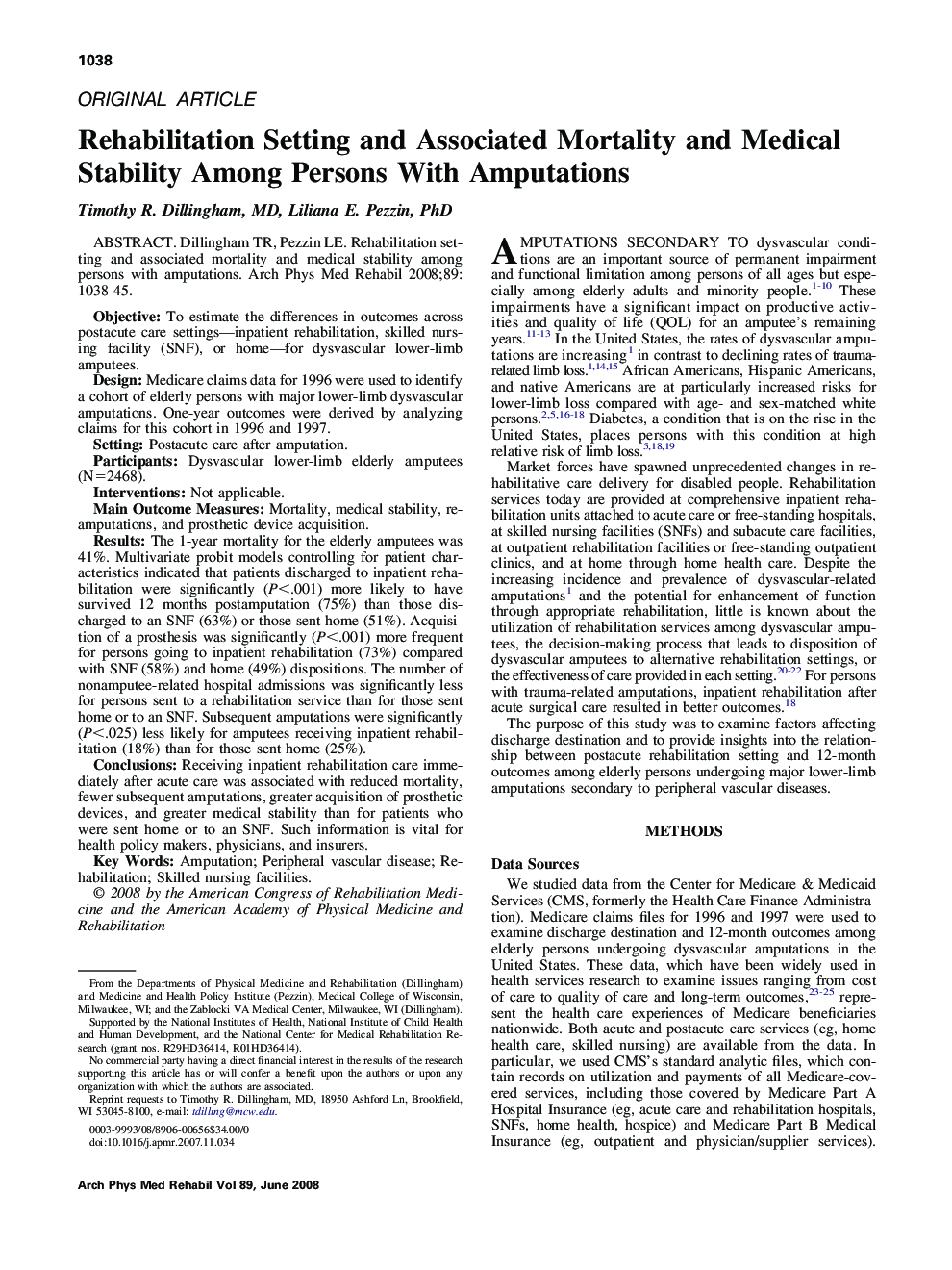| Article ID | Journal | Published Year | Pages | File Type |
|---|---|---|---|---|
| 3451773 | Archives of Physical Medicine and Rehabilitation | 2008 | 8 Pages |
Dillingham TR, Pezzin LE. Rehabilitation setting and associated mortality and medical stability among persons with amputations.ObjectiveTo estimate the differences in outcomes across postacute care settings—inpatient rehabilitation, skilled nursing facility (SNF), or home—for dysvascular lower-limb amputees.DesignMedicare claims data for 1996 were used to identify a cohort of elderly persons with major lower-limb dysvascular amputations. One-year outcomes were derived by analyzing claims for this cohort in 1996 and 1997.SettingPostacute care after amputation.ParticipantsDysvascular lower-limb elderly amputees (N=2468).InterventionsNot applicable.Main Outcome MeasuresMortality, medical stability, reamputations, and prosthetic device acquisition.ResultsThe 1-year mortality for the elderly amputees was 41%. Multivariate probit models controlling for patient characteristics indicated that patients discharged to inpatient rehabilitation were significantly (P<.001) more likely to have survived 12 months postamputation (75%) than those discharged to an SNF (63%) or those sent home (51%). Acquisition of a prosthesis was significantly (P<.001) more frequent for persons going to inpatient rehabilitation (73%) compared with SNF (58%) and home (49%) dispositions. The number of nonamputee-related hospital admissions was significantly less for persons sent to a rehabilitation service than for those sent home or to an SNF. Subsequent amputations were significantly (P<.025) less likely for amputees receiving inpatient rehabilitation (18%) than for those sent home (25%).ConclusionsReceiving inpatient rehabilitation care immediately after acute care was associated with reduced mortality, fewer subsequent amputations, greater acquisition of prosthetic devices, and greater medical stability than for patients who were sent home or to an SNF. Such information is vital for health policy makers, physicians, and insurers.
